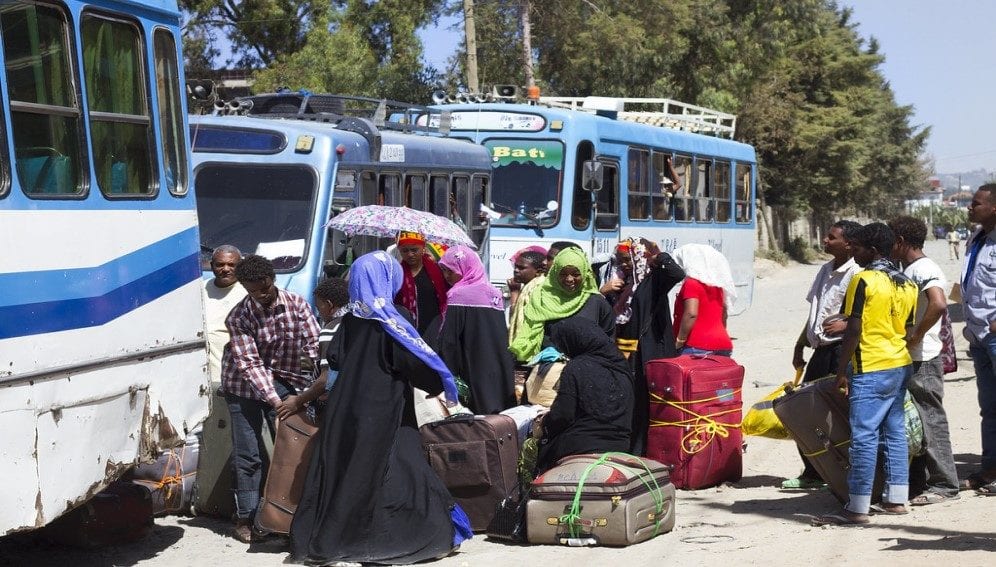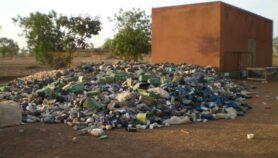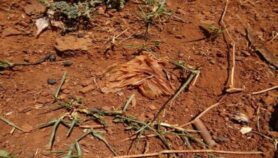01/03/21
Rural-urban migration ‘cut bush burning, air pollution’

By: Francis Kokutse
Send to a friend
The details you provide on this page will not be used to send unsolicited email, and will not be sold to a 3rd party. See privacy policy.
[ACCRA] Harmful emissions of nitrogen dioxide (NO2) were reduced in 13 African countries in recent years, bucking the trend of increasing air pollution, as rural to urban migration led to a decline in agricultural burning, a study suggests.
Researchers say that Africa has about 70 per cent of burned areas globally, with the practice of bush burning — setting fires during dry seasons to clear land — particularly common in north equatorial Africa. The region is home to over 275 million people and spans 15 countries including Cote d’Ivoire, Ghana, Senegal, South Sudan and Uganda.
“That would suggest that there are likely also some decrease[d] air pollution-related health problems in that region during the dry season.”
Jonathan E. Hickman, Columbia University
The study published in the Proceedings of the National Academy of Sciences last week (16 February) assessed air pollution seasonal fires and population growth in the grassland region of north equatorial Africa during November to February from 2005 to 2017.
Researchers used satellite data and imagery to measure the amounts of nitrogen dioxide (NO2) gas as a measure of air pollution. They also used satellite imagery to measure burned areas.
“Our study finds that there is a decline in NO2 of 4.5 per cent in that region during that time of year,” said Jonathan Hickman, lead author of the study and a researcher at NASA’s Goddard Institute for Space Studies at the US-based Columbia University.
“That would suggest that there are likely also some decrease[d] air pollution-related health problems in that region during the dry season, but we do not have any specific evidence for this.”

A report by UNICEF indicates that air pollution is a growing challenge in Africa, with deaths in Africa from outdoor air pollution rising from 164,000 in 1990 to 258,000 in 2017.
Biomass burning contributes greatly to the release into the atmosphere of NO2, a harmful pollutant linked to health issues such as lung and respiratory diseases.
According to the study, economic and demographic data showed that decreases in NO2 were linked to areas where populations and economic activities had increased, leading the researchers to suggest that rural to urban migration might have contributed to the decline in NO2.
Hickman added that the study was conducted because Sub-Saharan Africa is undergoing rapid changes such as urbanisation that have implications for air quality but has not been the focus of scientific study.



Hickman said that the study did not examine population dynamic changes within countries.
“We did not explicitly consider what countries are experiencing improvements in the paper,” Hickman clarified. “Instead, we focus on the productive grasslands.”
Leonard Amekudzi, an associate professor and provost of the College of Science at the Kwame Nkrumah University of Science and Technology, Ghana, who was not involved in the study, told SciDev.Net that the study provides accurate but limited information.
“Nitrogen oxides are not the only air pollution gases in the atmosphere linked to population explosion,” he explained, citing other gases such carbon monoxide and sulphur oxides.
Amekudzi added that the season November to February used for the study is only applicable to West Africa, and that “the burning could even go beyond March in Sahelian regions in the West and part of central Africa”.
This piece was produced by SciDev.Net’s Sub-Saharan Africa English desk.
References
Jonathan E. Hickman and others Reductions in NO2 burden over north equatorial Africa from decline in biomass burning in spite of growing fossil fuel use, 2005 to 2017 (Proceedings of the National Academy of Sciences, 16 February 2021)













